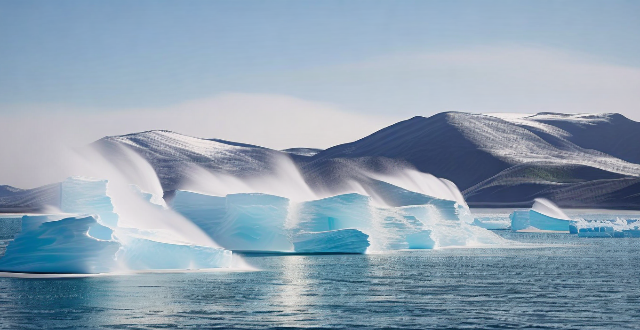Climate variability refers to the fluctuations in the Earth's climate system over time. The effects of climate variability are often seen in extreme weather events, including hurricanes and droughts. Climate variability can influence hurricanes by causing warmer ocean waters and changes in atmospheric circulation patterns. It can also affect droughts by changing precipitation patterns, increasing evaporation rates, and altering vegetation cover. As global temperatures continue to rise due to human activities, these extreme weather events are expected to become more frequent and severe.

Climate Variability and Extreme Weather Events
Climate variability refers to the fluctuations in the Earth's climate system over time. These fluctuations can occur naturally or be influenced by human activities, such as burning fossil fuels and deforestation. The effects of climate variability are often seen in extreme weather events, including hurricanes and droughts.
How Climate Variability Influences Hurricanes
Hurricanes are powerful storms that form over warm ocean waters. They are fueled by heat and moisture, which are both influenced by climate variability. Here's how:
- Warmer Ocean Waters: As global temperatures rise due to climate change, ocean waters become warmer. Warmer waters provide more energy for hurricanes to form and intensify. This means that we may see more frequent and severe hurricanes in the future.
- Changes in Atmospheric Circulation: Climate variability can also affect atmospheric circulation patterns, such as the El Niño Southern Oscillation (ENSO). During an El Niño event, trade winds weaken, leading to warmer waters in the Pacific Ocean. This can create conditions favorable for hurricane development in the Atlantic Ocean.
How Climate Variability Influences Droughts
Droughts occur when there is a prolonged period of below-average precipitation. Climate variability plays a significant role in the occurrence and severity of droughts. Here's how:
- Changes in Precipitation Patterns: Climate variability can cause changes in precipitation patterns, making some regions wetter while others become drier. For example, if a region experiences a decrease in rainfall due to climate variability, it may lead to a prolonged drought.
- Increased Evaporation: As global temperatures rise due to climate change, evaporation rates increase. This means that more water is lost from soils and plants through evaporation, exacerbating drought conditions.
- Altered Vegetation Cover: Changes in vegetation cover, such as reduced tree cover or increased shrubland, can alter the local climate and contribute to drought conditions. For example, reduced tree cover can lead to increased surface temperatures and decreased moisture availability, making the area more susceptible to drought.
In conclusion, climate variability has a significant impact on extreme weather events like hurricanes and droughts. As global temperatures continue to rise due to human activities, we can expect these events to become more frequent and severe. It is essential for us to take action to mitigate the effects of climate change and adapt to its impacts on our environment and society.